Foreign media has reported that VueReal, a Canadian developer of Micro LED display technologies, recently revealed a novel 3–4 inch transparent Micro LED display with a transparency level of 85% and brightness of 3000 nits, yet the resolution has yet to be disclosed.
Reports continued to indicate that according to the video released by VueReal, the transparent display is produced on glass, but the company can also manufacture the display on a flexible substrate.

Image source: Screenshot of VueReal’s video
VueReal described that its trial production line can produce customized displays, targeting markets of wearable, vehicle mounted, and AR devices. By the end of this year, the company will be able to produce 4000 Gen 2 substrates (370 × 470 mm) per month. Presently, VueReal is talking to display manufacturers with the hope of incorporating this novel technology into their products.
Transparent Displays Are Becoming a Thing
Over the past two years, the traditional LED, OLED, and Mini/Micro LED markets have witnessed an increasing number of transparent products, which have become a rising star in the entire industry. Therefore, display and panel providers in China and abroad are striving to explore the advantages and possible applications of transparent displays.
According to LEDinside, some transparent products have already been put into use.
Recently, South Korean manufacturer Changsung Sheet has developed a transparent thin-film LED display and applied it to the automatic escalator of Fujitec, a Japanese business. The escalator with a transparent LED display is now being used by large shopping malls in India.

Image source: Fujitec Co., Ltd.
Last year, LG Display provided 55-inch transparent OLED windows for Beijing and Shenzhen subway trains, on which real-time information is presented, such as weather forecasts, news, schedules, and travel updates.
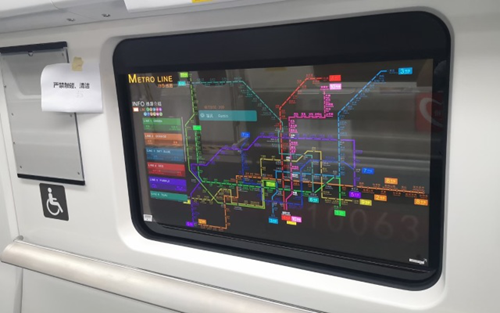
Image source: LG Display
In the same year, Xiaomi unveiled the world’s first transparent OLED TV, of which the panel was provided by LG Display. In fact, LG Display already demonstrated a transparent OLED model in 2017. Based on LG Display’s transparent display panel, Panasonic and Skyworth also released transparent TVs afterwards.
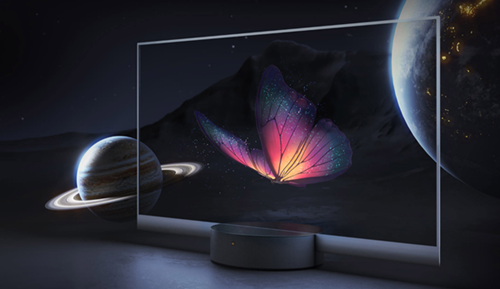
Image source: Xiaomi
Additionally, LG Display showcased a series of smart home products in the beginning of this year, among which the smart bed features a transparent OLED monitor, allowing users to check the weather or watch TV programs.
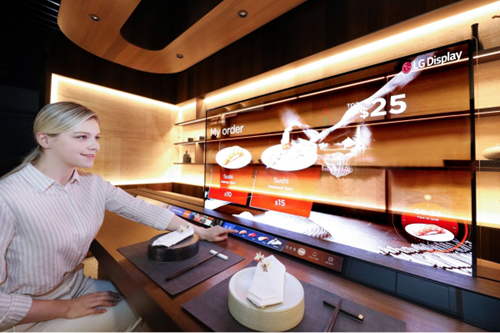
Image source: LG Display
In addition to VueReal, numerous manufacturers have made progress regarding the R&D of Micro LED technologies. The Industrial Technology Research Institute and PlayNitride in Taiwan, for example, separately showed their transparent Micro LED displays this year.
The Institute proposed a low-diffraction transparent panel structure that largely reduces the intensity of diffraction for transparent displays, enabling Micro LED displays to more clearly present text and images.
During the virtual SID Display Week 2021, PlayNitride presented a TFT-based transparent Micro LED display, which measures 7.56" (720 × 480) with 60% transparency and 114 PPI.
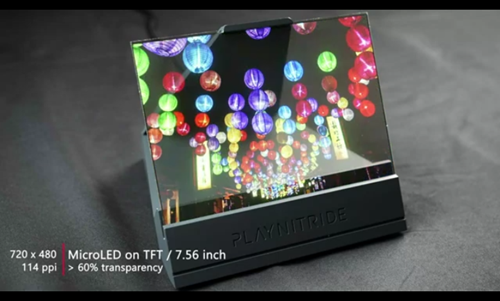
Image source: Screenshot of PlayNitride’s video
Additionally, the transparent display technology has been applied to smart cars through cross-disciplinary collaboration.
On June 14, SAIC Motor and BOE Varitronix signed a strategic partnership agreement, facilitating comprehensive and deep cooperation in fields of smart car cabin display (i.e., R&D and product design) and automotive applications. The two companies will jointly develop innovative products such as curved central control displays, flexible OLED displays, and transparent car window displays.
Smart cars are a trend of the automotive industry, and transparent display is most likely to be used in smart windows. While ensuring adequate light transmittance within the car, a transparent monitor serves various functions such as interaction, entertainment, and advertisings display. Currently, Hyundai Mobis, Ford, and Toyota have attempted to use transparent displays in their smart cars.
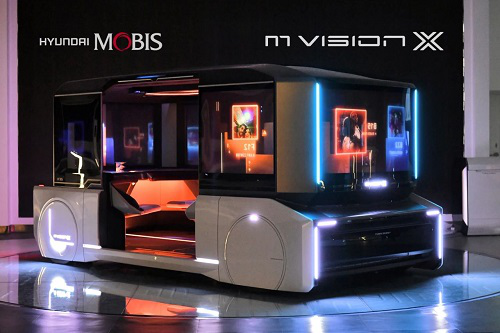
Image source: Hyundai Mobis
Summary
Indeed, more user feedback is required to verify the reliability and usefulness of transparent display products. That being said, because of the increasing market demand and technological advances, transparent display is likely to take the display industry to the next level. Moreover, the popularity of this cutting-edge technology continues to grow.
Noticeably, the transparent display technology has grown in popularity among businesses related to aerospace, smart home, smart building, smart medicine, smart wearables, and military applications, thereby revealing its promising future. (Written by Janice from LEDinside)
Release Date: 30 April 2021
Language: Traditional Chinese / English
Format: PDF
|
If you would like to know more details , please contact:
|


















